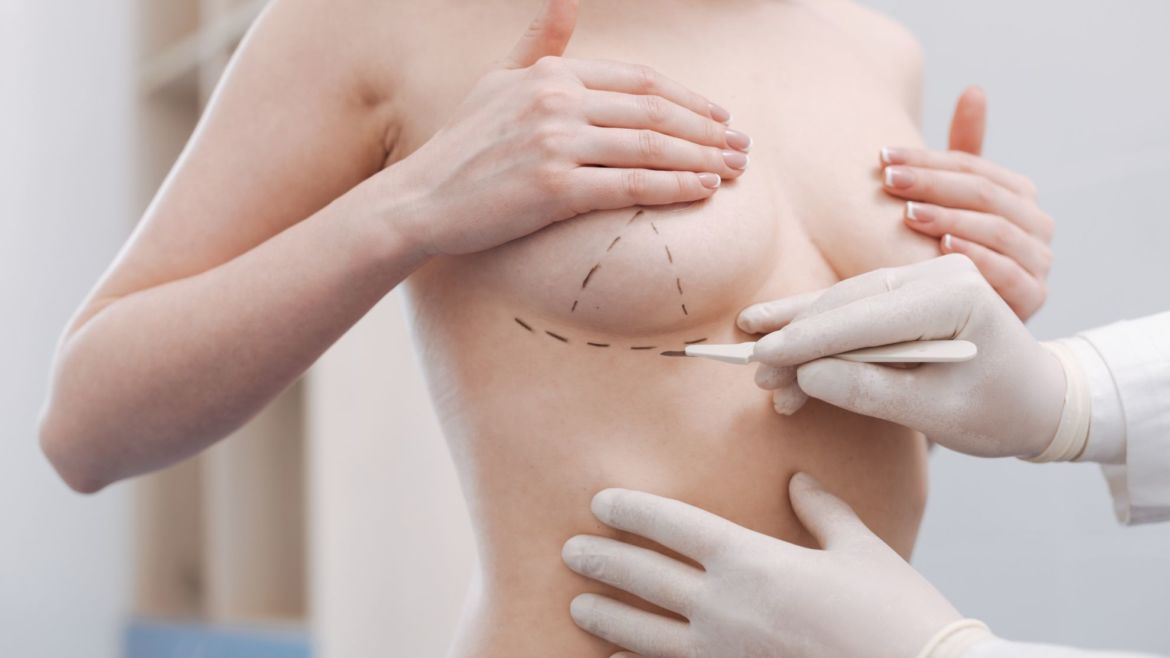DURATION OF PROCEDURE 1 hour
TYPE OF ANAESTHESIA Local with sedation or general
WHAT IS MASTOPEXY?
It is the breast lift, in great demand for cosmetic surgery.
The breast lift is indicated for women who want to revive a sagging breast (breast ptosis) or reduce and change the shape and size of the areola.
The breast ptosis can depend on a variety of factors: characteristics of the skin, fat component, glandular component, pregnancy, lactation, drastic and sudden thinness, ageing, menopause, etc.
The mammary ptosis is classifiable into four different degrees depending on the relaxation of the breast and the nipple-areola complex position relative to the inframammary fold. Surgical treatment of breast ptosis consists of excision of the skin in excess, in plication of the gland with fixing in a higher position, in the relocation of the nipple-areola complex in an upper position and the eventual insertion of implants.
The breast lift is a very safe procedure, little painful, executable in day hospital and marked by times of post-rapid recovery operators, provided, however, that is performed by a specialist in plastic surgery and within authorized facilities.
WHO CAN UNDERGO THE BREAST LIFT PROCEDURE?
Women who require this type of procedure are especially those whose breasts have lost their shape and volume originating as a result of factors such as pregnancy, lactation, the force of gravity and ageing. The breast lift is particularly suitable for women with small and saggy breasts because in the case of very large breasts the aesthetic result can be later compromised by the effects of gravity.
ARE THERE AGE LIMITS TO UNDERGO A BREAST LIFT?
There are no age limits to undergo this type of surgery, but it is preferable to wait for the complete development of the breast and put off surgery in women who are planning future pregnancies because pregnancy causes a stretching of the skin that could nullify the results.
PRE-SURGERY PHASE: WHAT TO DO BEFORE THE PROCEDURE?
Before the procedure of breast lift is necessary to undergo a thorough visit during which the surgeon will examine the size and shape of the breast, the areola and nipple as well as the quality and characteristics of muscles and mammary tissues in order to identify the level of breast ptosis, breast shape and size that best fits your body shape and the most appropriate surgical technique. The breast lift is particularly suitable for women with small and falling breasts who have kept the original volume, while in the case of very large breasts or who have lost all or part of their volume is advisable to associate with mastopexy a breast enlargement or reductive surgery to re-shape, add volume and compactness to the breasts.
During the visit, the surgeon will assess your current health status track-record to exclude the presence of complications (high blood pressure, problems with wound healing or clotting) that could affect the final result. It also provides all relevant information on the type of diet to follow before and after surgery and the use of drugs, alcohol and cigarettes.
WHAT TYPE OF ANAESTHESIA IS PRACTICED?
The procedure of breast lift is generally performed under general anaesthesia without intubation (ie only with the aid of the laryngeal mask) and may require one night of hospitalization in the clinic. A small breast lift can be performed in outpatient and under local anaesthesia with sedation (which means that the patient will be awake but relaxed and insensitive to pain). Before surgery, the anesthesiologist will conduct a careful preoperative examination and prescribe a list of routine tests such as blood count Electrocardiogram PT, PTT, fibrinogen Electrolytes Glucose, BUN, creatinine, Serology (virus hepatitis B, C and HIV) senological visit with breast ultrasound and/or mammography.
WHERE ARE THE INCISIONS MADE?
Depending on whether it is small, medium or large mastopexy, incisions can be made only around the areola or extend vertically down to the inframammary fold or extend along the inframammary fold (so-called anchor-shaped or inverted T incision).
WHAT IS THE POST-OPERATIVE COURSE?
In the first 48 hours, the breast lift will have to rest. In the first two days may appear swelling and bruising around the treated area. Rarely may occur infection, bleeding, keloid scars and alterations of the sensitivity of the areola and nipple (especially in patients who smoke). From the third day, you can resume your normal life but avoiding strenuous activities, saunas, steam baths and sun exposure. After 7-10 days you can come back working if it is not too tiring. Three weeks after the breast lift, you can gradually resume all normal activities including sports.


